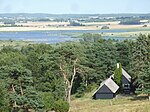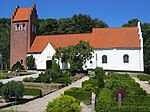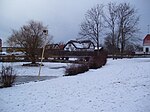Godhavn railway halt
Buildings and structures in Gribskov MunicipalityDanish railway station stubsRailway stations in Denmark opened in the 1920sRailway stations in the Capital Region of DenmarkRailway stations opened in 1924

Godhavn railway halt (Danish: Godhavn Trinbræt) is a railway halt serving the seaside resort of Tisvilde on the north coast of the island of Zealand, Denmark. The railway halt is located on the Tisvildeleje branch of the Gribskov railway line from Hillerød to Tisvildeleje. It opened in 1924 with the opening of the Helsinge–Tisvildeleje section of the Gribskov line. The train services are currently operated by the railway company Lokaltog which runs frequent local train services between Hillerød and Tisvildeleje.
Excerpt from the Wikipedia article Godhavn railway halt (License: CC BY-SA 3.0, Authors, Images).Godhavn railway halt
Skovridervænget, Gribskov Municipality
Geographical coordinates (GPS) Address Nearby Places Show on map
Geographical coordinates (GPS)
| Latitude | Longitude |
|---|---|
| N 56.059944444444 ° | E 12.097222222222 ° |
Address
Godhavn
Skovridervænget
3220 Gribskov Municipality, Tisvilde Lunde
Capital Region of Denmark, Denmark
Open on Google Maps










